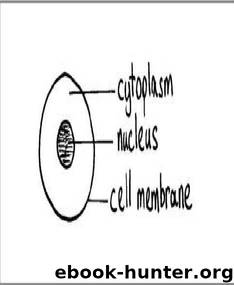Campbell's Physiology Notes For Nurses by John Campbell

Author:John Campbell
Language: eng
Format: mobi, pdf
Published: 0101-01-01T00:00:00+00:00
Layers
The walls of all the sections of the
GI tract from the oesophagus to the
rectum have the same basic layered
structure. The lumen is surrounded
by mucosa, submucosa, a muscular
layer and an outer serosa.
Mucosa
The
inner
layer,
immediately
surrounding the lumen, is called the
mucosa. This is composed of a
mucous
membrane
lined
with
mucus.
A mucous membrane is
simply a layer of tissue that secretes
m u c u s . Mucus
protects
the
underlying cells and also acts as a
lubricant to ease the passage of
material along the lumen. The
thickness of the mucosal epithelium
varies along the length of the tract.
In
areas
such
as
the mouth,
oesophagus and anus, which are
subject to a lot of mechanical forces
and abrasion, the mucosa is
composed of a stratified epithelium.
In
sections
associated
with
absorption it is important for the
lining to be thin to facilitate
diffusion of nutrients. In these areas
the mucosa is composed of a simple
columnar epithelium.
Underneath the epithelium but still
part of the mucosa is a layer of
connective tissue containing small
blood vessels. These vessels supply
nutrients
and
oxygen
to
the
epithelial cells. In some areas of the
GI tract they may also be involved
in the process of absorption. Under
the connective tissue is a thin layer
of smooth muscle. This supports the
overlying connective and epithelial
tissues and in some areas of the gut
pulls the lining up into a series of
folds. These folds have the effect of
enlarging the internal surface area
of the lumen thus increasing the rate
of digestion and absorption.
Submucosa
The layer underneath the mucosa is
called the submucosa. This is
composed of loose connective
tissue and also carries numerous
blood vessels that perfuse the gut
wall with blood. In certain areas of
the 01 tract, the submucosa contains
exocrine glands that produce some
o f the digestive enzymes. Areas of
lymphatic tissue are found in the
submucosa; these are referred to as
lymphatic nodules and provide an
immune function. This layer also
contains a network of intrinsic
nerve fibres collectively called the
submucosal plexus. ('Plexus' means
à network of blood vessels or
nerve fibres'.)
Muscular layer
Under the submucosa is the
muscular layer or muscularis. There
a r e two
layers
of
smooth,
involuntary muscle: the outer layer
is composed of longitudinal muscle
fibres and the inner layer of circular
muscles. The wall of the stomach
has an additional inner layer of
muscle fibres, which run obliquely.
Activity of the muscular layer is
coordinated
by a network of
intrinsic, autonomic nerve fibres
called the myenteric plexus.
Contraction and relaxation of
these muscle layers allows material
to be propelled along the GI tract.
This muscular contraction also
helps with the physical breakdown
of food and aids the mixing in of
digestive enzymes. In addition to the
involuntary muscles found in the
wall of the GI tract, the mouth,
pharynx, oesophagus and anus also
contain voluntary muscles.
Serosa
The outer layer of the gut wall is
called the serosa. This is composed
o f loose connective tissue with a
serous membrane on the external
surface of the bowel. Like all
serous membranes it secretes a
small volume of serous fluid (fluid
derived from serum, i.e. plasma)
that acts as an external lubricant.
Below the diaphragm, the serosal
Download
Campbell's Physiology Notes For Nurses by John Campbell.pdf
This site does not store any files on its server. We only index and link to content provided by other sites. Please contact the content providers to delete copyright contents if any and email us, we'll remove relevant links or contents immediately.
| Administration & Medicine Economics | Allied Health Professions |
| Basic Sciences | Dentistry |
| History | Medical Informatics |
| Medicine | Nursing |
| Pharmacology | Psychology |
| Research | Veterinary Medicine |
1610396766 (N) by Jo Ann Jenkins(1566)
Elizabeth Is Missing by Emma Healey(1565)
Economics and Financial Management for Nurses and Nurse Leaders, Third Edition by Susan J. Penner RN MN MPA DrPH CNL(1451)
McGraw-Hill Nurses Drug Handbook by Patricia Schull(1402)
Cherry Ames Boxed Set, Books 1 - 4 by Helen Wells(1333)
NCLEX-RN Prep Plus 2019 by Kaplan Nursing(1308)
The Language of Kindness by Christie Watson(1303)
Home. by Sarah Graham(1300)
Spiritual Midwifery by Ina May Gaskin(1282)
Cherry Ames, Student Nurse by Helen Wells(1275)
Cherry Ames Boxed Set, Books 5 - 8 by Helen Wells(1236)
Whoever Tells the Best Story Wins: How to Use Your Own Stories to Communicate with Power and Impact by Annette Simmons(1231)
Cracking the Nursing Interview by Jim Keogh(1217)
1476763445 by Liz Fenton(1175)
Getting Started with Arduino by Massimo Banzi(1133)
Dementia by June Andrews(1127)
Children's Medicines by Edward A. Bell(1102)
Cherry Ames, Army Nurse by Helen Wells(1083)
Shadows of the Workhouse: The Drama of Life in Postwar London by Jennifer Worth(1056)
